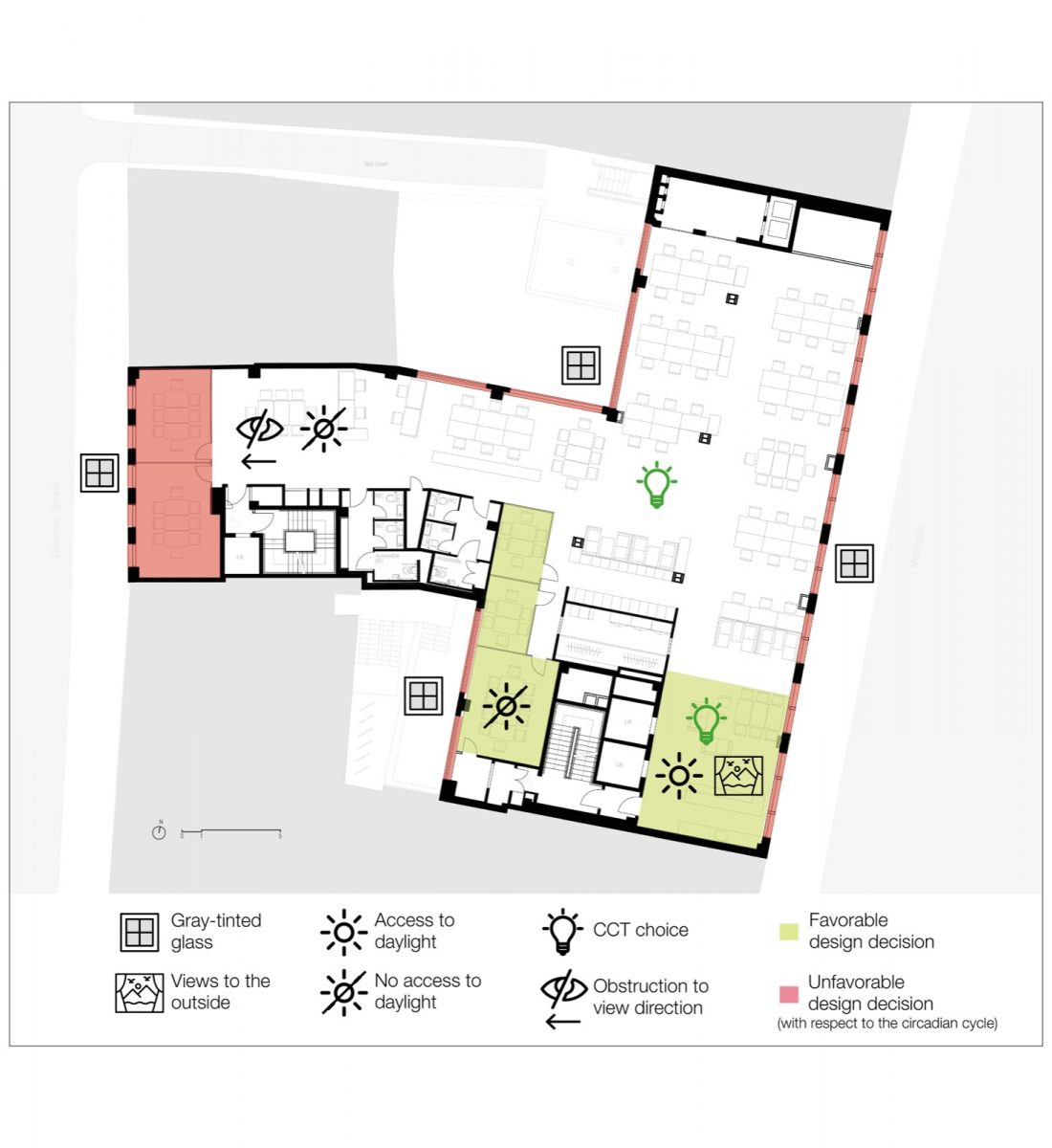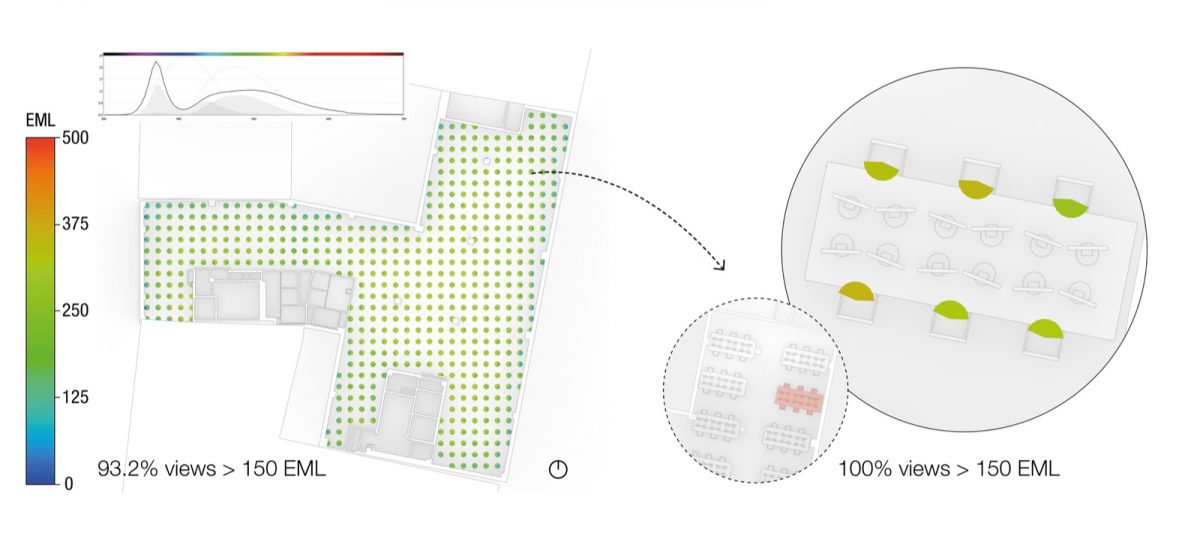Wellbeing and the Circadian Cycle in Office Buildings
[Thesis developed in collaboration with Hilson Moran]
Daylight has long been related to wellbeing in architecture, which has been reflected in numerous design approaches and assessment methods. These are usually related to the visual aspects of light, on the spectrum that the human eye can see. Recently, findings in the photobiology field have shown how light also affects humans through non-visual aspects, impacting directly on the entrainment of the circadian rhythm. This breakthrough has highlighted the need to investigate further how the built environment can impact comfort and health, in consideration of the use of artificial light on a daily basis. This research focuses on office buildings, exploring how design strategies such as orientation and layout can influence the circadian cycle in this typology, while looking at the role of artificial and study, a fit-out office in London was chosen, 51 Moorgate by SKANSKA, which was accredited with the WELL Institute platinum accreditation that considers ‘circadian lighting’. Site visits and computational simulations to consider both visual and non-visual aspects of light were undertaken to analyse how different building and layout configurations can impact the human’s biological clock. Based on literature review and the comparison of the simulation results and iterations, this thesis proposes design recommendations for office buildings considering a holistic approach to health, wellbeing and the circadian cycle, reflecting on the impact artificial lighting can impose when used as the main source of light.















